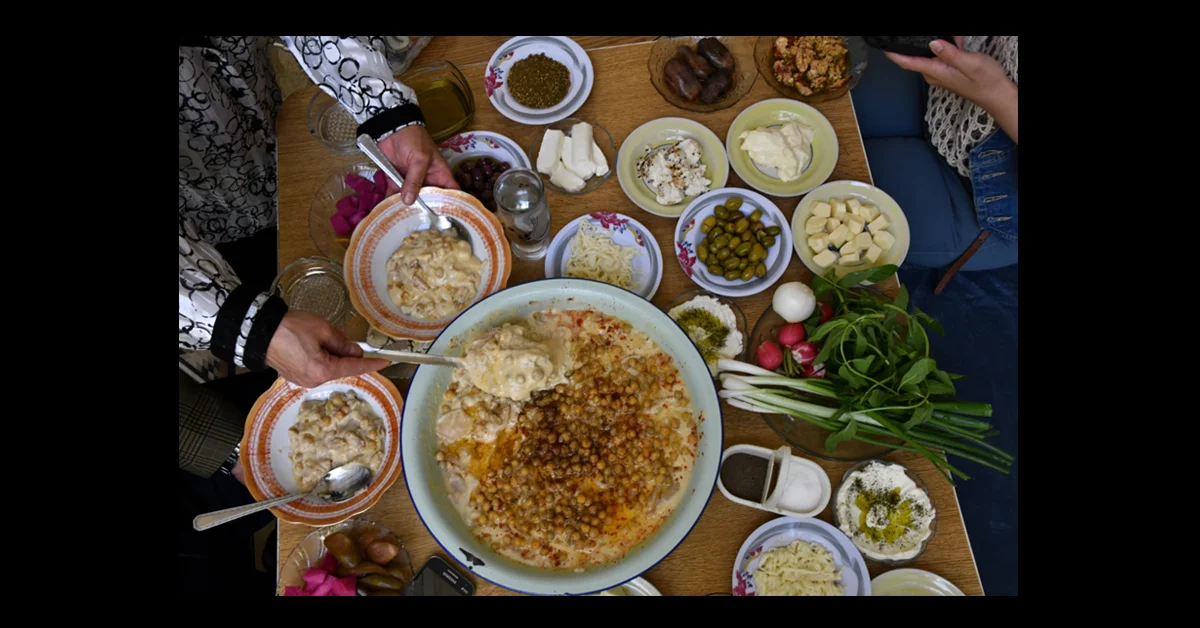by Rania Kataf
Our relationship to food, as Damascenes, is a true and sentimental combination of living to eat and eating to live. Food is a very important aspect of our Damascene culture. As Syrians we tend to hold on to traditional habits that have been passed on from generation to generation.
When it comes to enjoying our food, either indoors or outdoors, we know very well how to create a recipe of health and happiness on a plate. Nobody eats alone in Damascus. The vitamins in each meal come from the conjoined efforts of every heart that brought that meal together.
Men, women and children often play a role in the preparation of every meal; breakfast, lunch and even dinner. The father, for example, wakes up in the morning knowing that in a few minutes he will be standing in a long queue to buy freshly baked flat bread for his family. The oldest son will be racing to the closest hummus shop, before work or school, to bring back home their share of hummus and fava-beans, the typical Damascene breakfast especially on Fridays. While the youngest daughter sets the table, the mother prepares whatever supply she has at home, like eggs, dairy products, olives, zaatar (classic herb and spice blend), and homemade jams.
But this scene might not repeat itself every week. With many people living outside the city or far from home due to their jobs, schools or universities, it has become common to substitute this family food gathering with street food. Street food has become very popular in Damascus. People can have their meal, sandwich or snack on the go at minimal prices, and still get the same taste they are used to at home. The real difference, for sure, might be the location. But they all have that one conviction in common, regardless of the place and type of food they may serve: food should always be made with passion, the only secret ingredient passed from our ancestors to help us create the perfect recipe.

Our mornings are always filled with the faces of graceful old men who have just finished their morning prayers at the nearest mosque in their neighborhood and are walking back to their homes carrying a stack of freshly baked flat bread for their families at home.
Location: al-Qanawat

One of the common habits you may recognize in the city center is the cooling technique people use before filling the bread into plastic bags for storage. The bread is left outside to cool, to avoid it from becoming stale and to prolong its shelf life. Many bread buyers hang the bread on a metal construction. Sometimes, tables are just set outside the bakery for the customers to take usage of them for this purpose. Walking by these constructions is always a pleasant experience to the soul. The aroma is a perfect combination of salt, yeast and water, mixed with the fresh air of a Damascene morning.
Location: al-Muhajirin
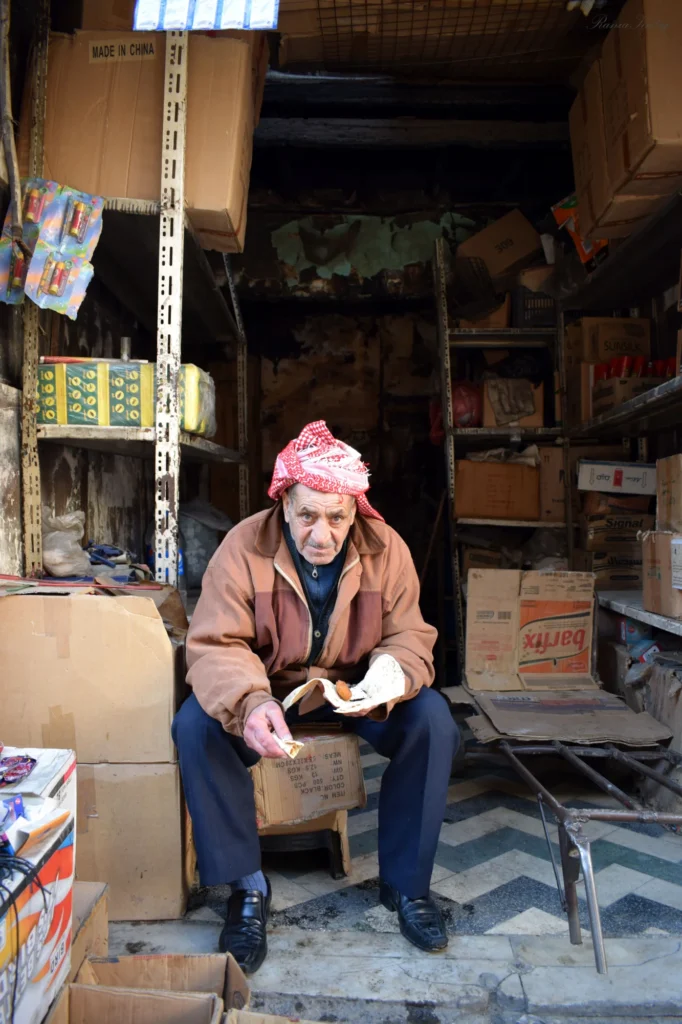
Falafel and white goat cheese with black sesame seeds is the typical breakfast for many shopkeepers who start their business early in the old Suqs of Damascus. “I buy my fresh bread and falafel on my way to work and my neighbor brings over some white goat cheese from his household for us to share while we have our breakfast together”, says Abu Muwafaq.
Location: Bab as-Saghir, Old Damascus

“Come to get a taste of what we have got prepared for you. Indulge all your senses with a taste of Mohamad Dhueki’s great sandwiches,” is written on the front wooden panel of this stand in as-Sulaymaniyya nearby Suq al-Hamidiyya. There are many food vendors like Mr. Dhueki who serve a variety of sandwiches in locally popular areas. Sometimes you might be lucky enough to end up with a vendor who provides other services like prepaid mobile cards.
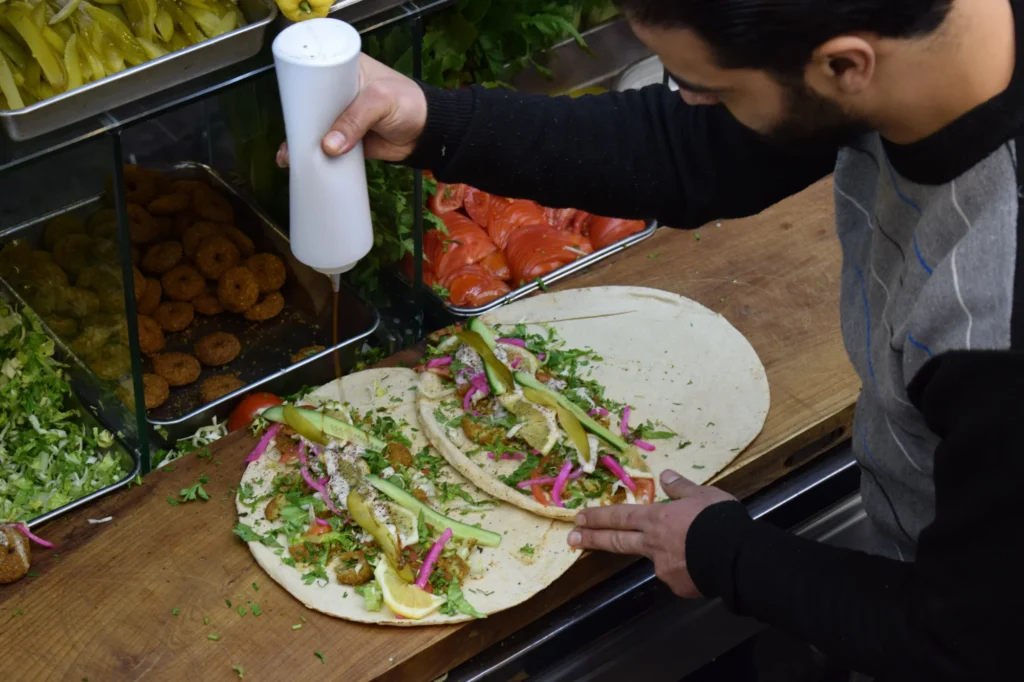
A falafel shop in the midst of Suq al-Hamidiyya: a destination where many people stop by to take a break after a long day at work or shopping at the Suq.
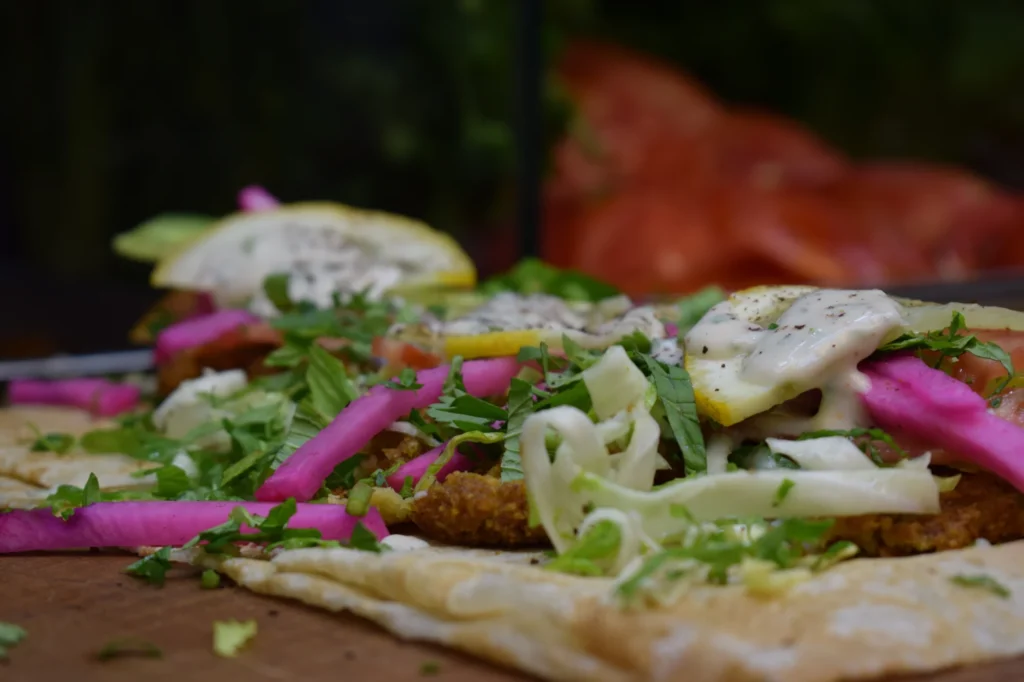
The perfect recipe for a falafel sandwich is always composed of a colorful combination of lettuce, cabbage, mint, pickles, lemon, tahini yogurt dressing and some sumac.

If you are not a fan of sandwiches, this shop in al-Qaymariyya, Old Damascus, will be your second choice of local food shops in the city. It offers freshly soaked and salted lupini beans known as tarmus, a healthy traditional snack loved by the Damascene community. School students especially often hide the snack in their pockets and school bags. Many young ladies buy termos for its high protein content as they believe it helps to stimulate hair growth amongst other health benefits.
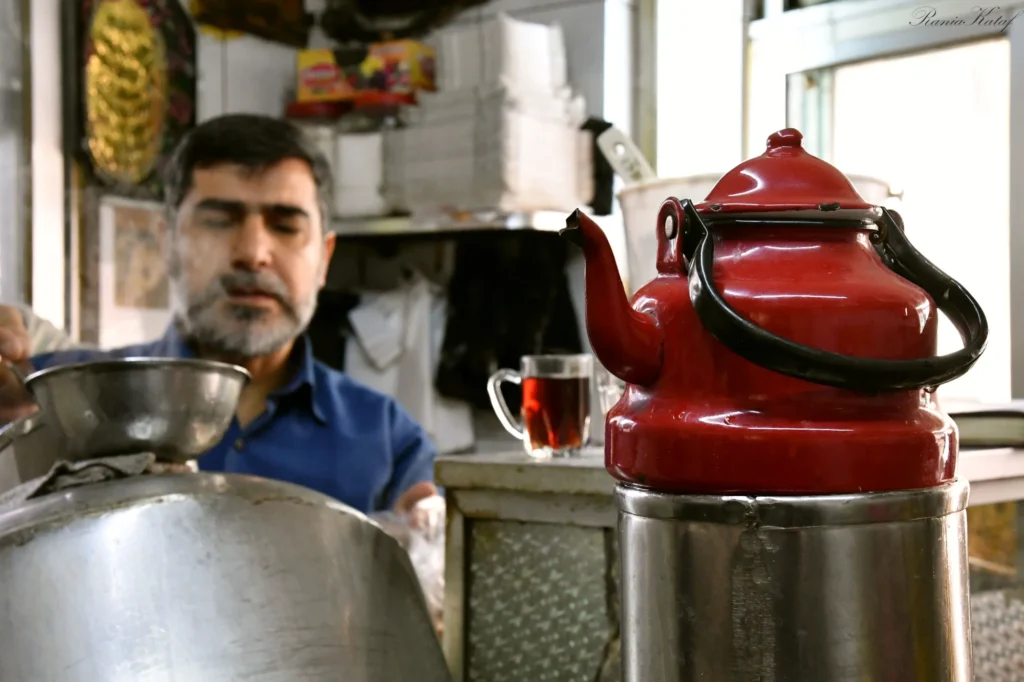
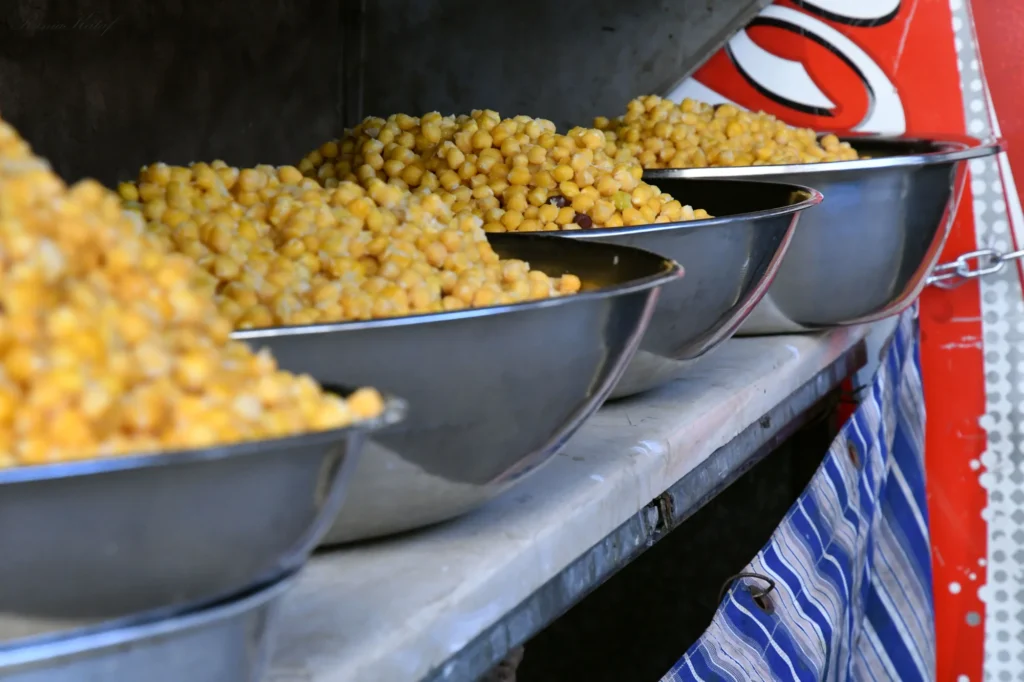
This is Ra’oof al-Tatari, the current owner of Al Barakeh, one of the most popular hummus shops in al-Muhajirin. Established nearly 70 years ago, the shop was first owned by his partner from the al-Syoufi family: “I try to have everything prepared by 8:00 in the morning”, says al-Tatari, “especially on Fridays because it is family day and everyone likes to spend their lazy mornings at home. So they come to me to have their breakfast prepared from A to Z. People love my hummus (chickpeas), solid or paste. I usually prepare them a day before to make sure they have been soaked well for around six hours. The best quality hummus used to come from the south, Darʿa or al-Suwayda, unlike the ones farmed in the mountains, they are softer and can be prepared faster.”
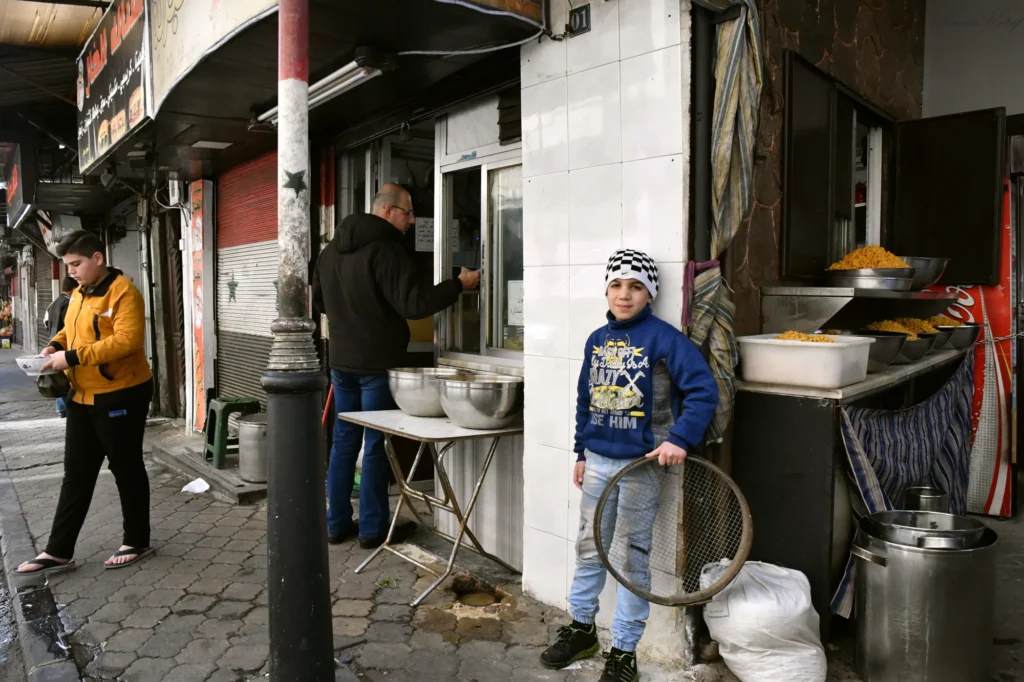
Most of these food vendors are family businesses, run by brothers or a father and his sons. Al-Tatari’s son joins his father on weekends to help him prepare and learn from his experience. He is holding a round wooden sieve which is generally used for drying the chickpeas after they have been soaked overnight.
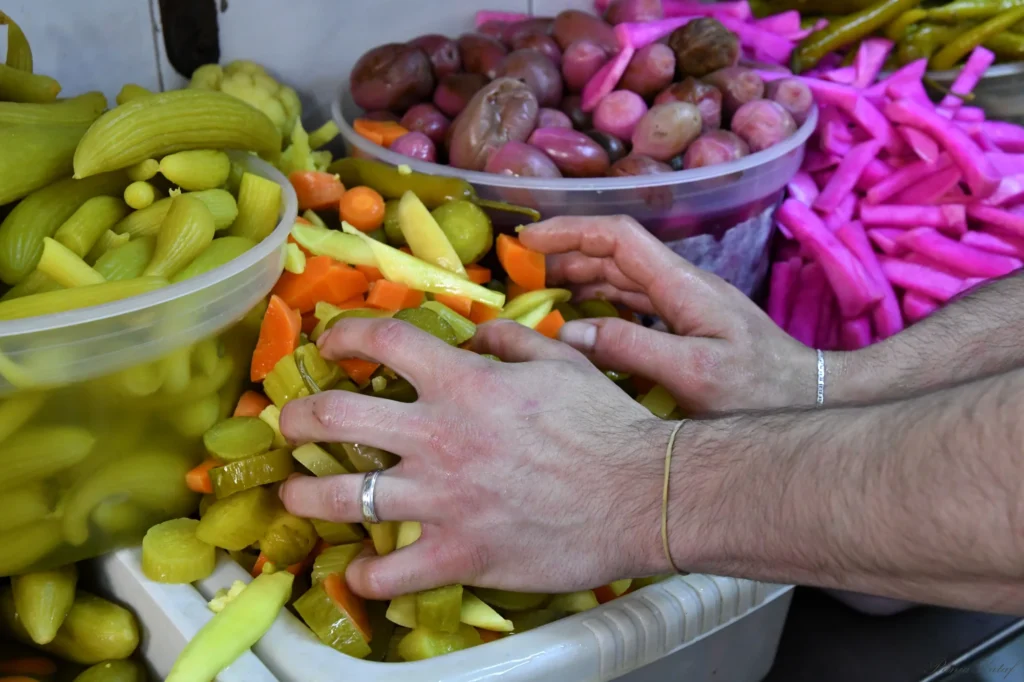
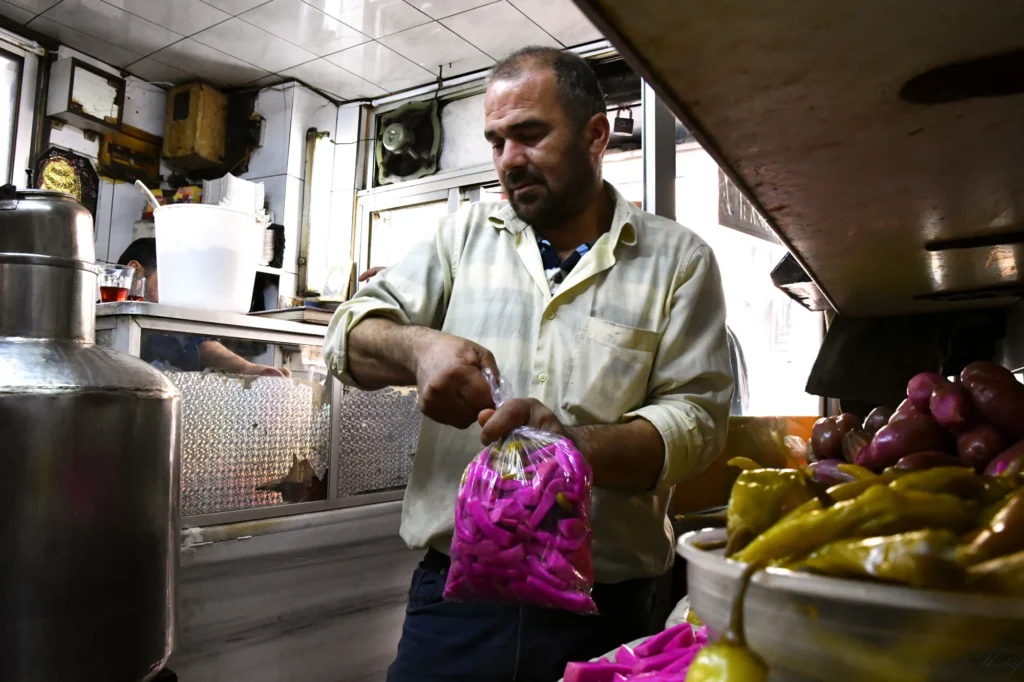
Most hummus shops produce their own pickles. It even became a trend to buy them instead of making your own batch at home. If you ask people which one they prefer, they will go for the shop’s pickle. Why? Simply because it is ‘their thing’, believing there must be a secret recipe these shopkeepers follow that makes these pickles so tasty and crunchy. The variety of pickled vegetables you will find on your breakfast table, ranging from eggplants to cucumber, carrots, cabbage, and my personal favorite, green paprika pickles, accommodate the taste of your hummus paste or fatteh (a Syrian dish made of chickpeas, bread, tahini yogurt sauce and olive oil).
Location: same shop. Al-Muhajirin
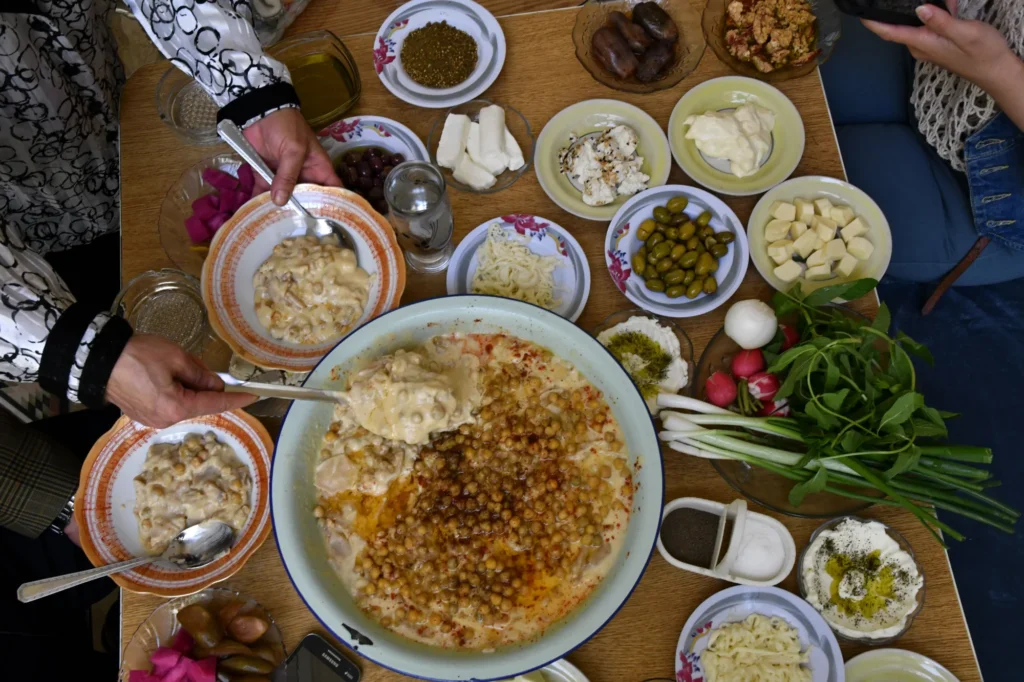
Breakfast is served.
A typical Damascene breakfast table has to look something like this on a weekend. Hummus paste, fatteh, olives, white goat cheese, zayt and zaatar (thyme and oil), eggs, yogurt, fresh vegetables, and the essential ingredient for a perfect Friday morning: the whole family.
